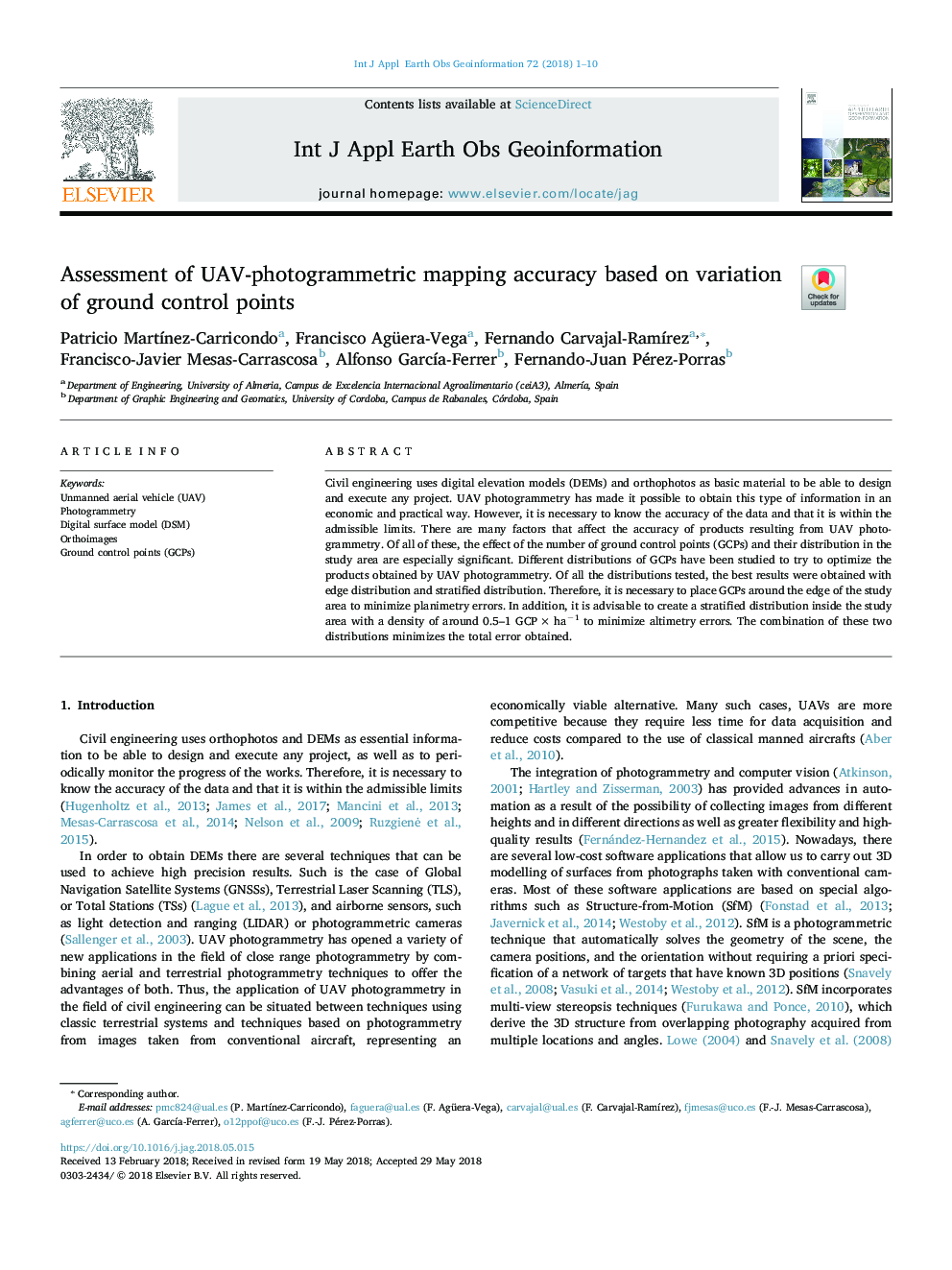| Article ID | Journal | Published Year | Pages | File Type |
|---|---|---|---|---|
| 8867716 | International Journal of Applied Earth Observation and Geoinformation | 2018 | 10 Pages |
Abstract
Civil engineering uses digital elevation models (DEMs) and orthophotos as basic material to be able to design and execute any project. UAV photogrammetry has made it possible to obtain this type of information in an economic and practical way. However, it is necessary to know the accuracy of the data and that it is within the admissible limits. There are many factors that affect the accuracy of products resulting from UAV photogrammetry. Of all of these, the effect of the number of ground control points (GCPs) and their distribution in the study area are especially significant. Different distributions of GCPs have been studied to try to optimize the products obtained by UAV photogrammetry. Of all the distributions tested, the best results were obtained with edge distribution and stratified distribution. Therefore, it is necessary to place GCPs around the edge of the study area to minimize planimetry errors. In addition, it is advisable to create a stratified distribution inside the study area with a density of around 0.5-1 GCPâ¯Ãâ¯haâ1 to minimize altimetry errors. The combination of these two distributions minimizes the total error obtained.
Related Topics
Physical Sciences and Engineering
Earth and Planetary Sciences
Computers in Earth Sciences
Authors
Patricio MartÃnez-Carricondo, Francisco Agüera-Vega, Fernando Carvajal-RamÃrez, Francisco-Javier Mesas-Carrascosa, Alfonso GarcÃa-Ferrer, Fernando-Juan Pérez-Porras,
